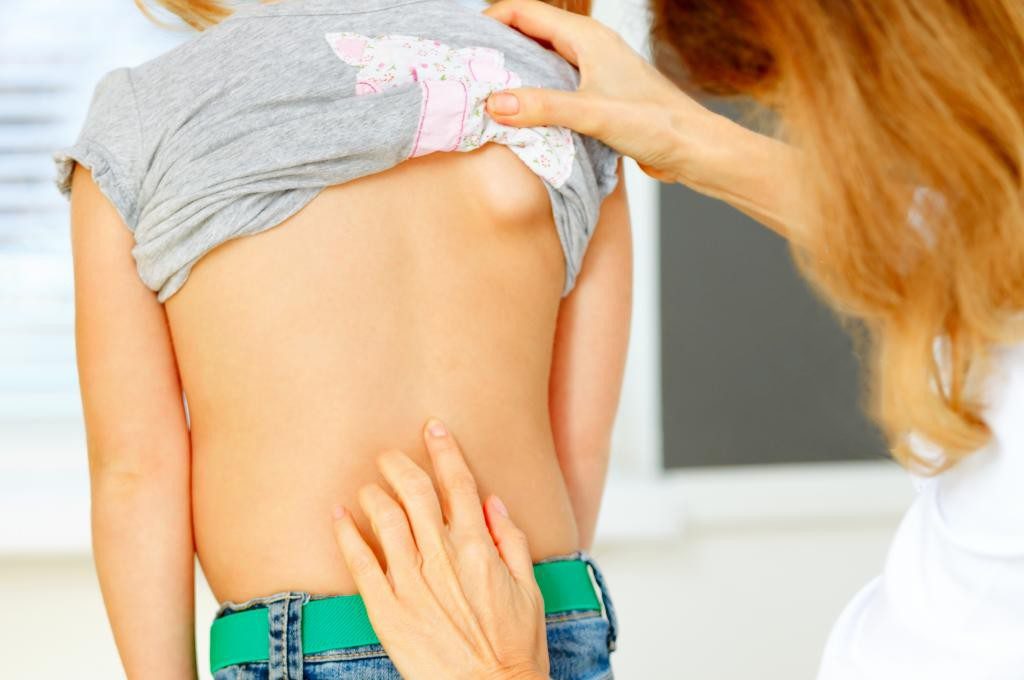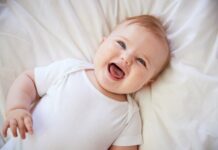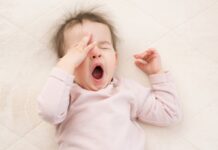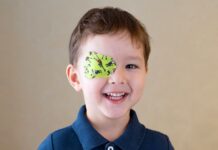Clothes not fitting properly, one shoulder blade sticking out more that the other, different shoulder blade heights, bilaterally asymmetric, back and hip pains and ribs sticking out while bending are some of the early signs of scoliosis in children.
Scoliosis is an abnormal curvature of the spine in the shape of generally an s’ or ‘c’, and not just poor posture. this is a developmental disorder and usually progresses till the complete growth of the bones of the body. mild scoliosis generally causes little problem whereas moderate scoliosis and severe scoliosis might late cause problems like difficulty in breathing and h
Read More: 11 Serious Symptoms of Typhoid in Children
Scoliosis in Children: Signs, Causes and Treatment
Early signs of Scoliosis in children
Scoliosis can be identified by observing the shoulders, shoulder blades, hips, etc. If scoliosis is identified early and the treatment is henceforth started, there is a good chance for improvement through exercises and observation of the child.
The clothes don’t fit properly
It is most commonly seen by parents when the clothes do not fit properly and the length of clothes in the arms is different. The child is uncomfortable and awkward with the clothes. The hemline of the clothes does not fit properly.
One shoulder blade sticks out more that the other
One shoulder blade sticks out more than the other and there is pain in the shoulder blades. The muscles in this region are trying very hard to control and compensate for the uneven spine which causes strain on these muscles and hence causes pain.
Shoulder blade heights are different
One shoulder blade is seen to be higher than the other.
The body seems bilaterally asymmetrical
The hips are uneven and the center of the hips is not aligned with the center of the eyes. In addition, the eyeline is tilted which may be observed by the parents when the child is standing straight.
Back and hip pains
The child would suffer from back pains which will be dull but continuous. The hip pains experienced by the patient are usually due to straining the sacroiliac and the iliolumbar ligament which are an important part of the sacroiliac joint and are liable to cause pain on straining of the tissue.
Problems at later stages
If the scoliosis is at a very high stage, the patient may have shortness of breath and cardiac problems.
Ribs stick out while bending
Ribs will stick out if you ask the child to do a full forward bend. This is, in fact, a test for early screening test for scoliosis. This involves the patient bending forward till his back comes in the horizontal plane, with his arms hanging down and the knees in extension.
The doctor stands behind the patient and looks along the spine, and checks for the asymmetry of the vertebral column.
Other visible signs may include lower quality of life, decreased physical activity and deceased social functioning due to the deformity.
Read More: 11 Best Calcium Supplements for Children
Causes of Scoliosis in children
The cause of most of the cases of scoliosis, approximately 80% remains unknown. This is called is idiopathic scoliosis. This may be hereditary and there might be no way to prevent the worsening of the curvature or even stop it. If this is infantile, it usually resolves as the child grows. Juvenile scoliosis is between 3 to 10 years and occurs more commonly in boys. Adolescent between 10 to 18 and girls are affected more as compared to boys.
- There is often a misconception that arises in the cases of scoliosis. People think that slouching, bad posture, sleeping position, lack of calcium and other causes like carrying heavy luggage or purses contribute to scoliosis, but as a matter of fact, it does not.
- Some children are born with congenital spine formation problems which occur during the development of the fetus. Some of these are absence of a vertebra or partially formed vertebrae or lack of formation of vertebrae. This type of scoliosis is often associated with other health issues also, such as stomach, bladder, kidney, heart, nerve problems because at the time of development of the fetus, there might have been other abnormalities also.
- Another type of scoliosis is neuromuscular scoliosis. This type is associated with neuromuscular conditions such as spina bifida, Muscular Dystrophy, some paralytic condition, spinal cord tumor, or neurofibromatosis(this is a condition associated with multiple nerve sheath tumors). Usually when the muscles and nerves of the spine are weak, the vertebral column is not properly supported and it may lead to neuromuscular scoliosis.
- Other causes of scoliosis can be differences in the lengths of both the legs, cerebral palsy, infections, some kind of injury to the spine, etc.
Read More: 5 Herbs For Strengthening The Uterus
Treatment for Scoliosis in children
The approach to treatment varies according to age, the cause of scoliosis, extent of curvature, tolerance for medications and your opinion or preference is usually taken into consideration during the treatment. Mild scoliosis generally does not cause much inconvenience and can be left under observation whereas moderate and severe cases require bracing or surgery according to the intensity, along with observation.
Hope this article was of help for all our parents!! Please share your comments/queries/tips with us and help us create a world full of Happy and Healthy Babies!!













